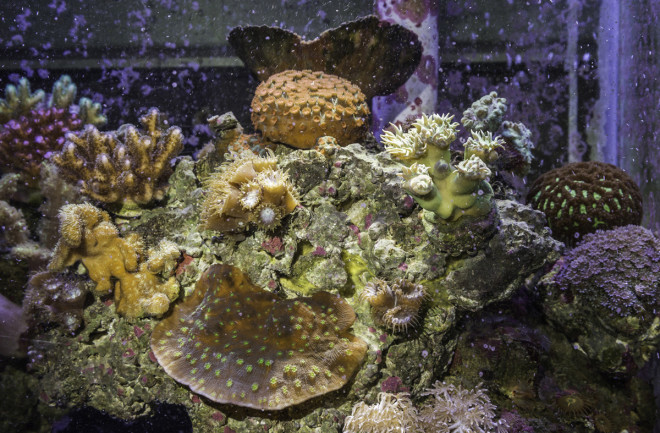Inside a dim laboratory at Oregon State University, a glass tank full of living corals glows like a slice of sky during the grand finale of a fireworks display. These species would never share the same stretch of ocean in real life, but they have one important thing in common.
“All of these corals are symbiotic,” says Virginia Weis, who chairs the Department of Integrative Biology, peering into the tank with me. “Every single one of them has algae, and without that interaction they would bleach and die.”
The corals eat but don’t digest these single-celled photosynthetic algae, which then reside inside the corals and feed them the carbon sugars created during photosynthesis. In return, the corals not only give the algae a safe berth but also feed the algae nutrients.
A crescendo of evidence points to the central role of microorganisms — bacteria, viruses, fungi and algae — in the health of oceans, forests, soils, plants, humans and other animals. These tiny, essential life-forms make up communities called microbiomes, in which microorganisms interact and trade services with each other and their host organisms. The more scientists look, the more they discover that microbiomes are the beating heart of every ecosystem, large and small.
“It’s as if we’re looking up into space a couple of centuries ago and someone handed us the first refractive telescope,” says University of California, Los Angeles, microbiologist Jeffrey Miller. He co-authored a paper last fall calling for a major initiative to deepen our understanding of microbiomes. “What’s out there? What do all these microorganisms do, and how do they interact? Microbiomes are such a big part of us and our world, but they’re so unexplored.”

